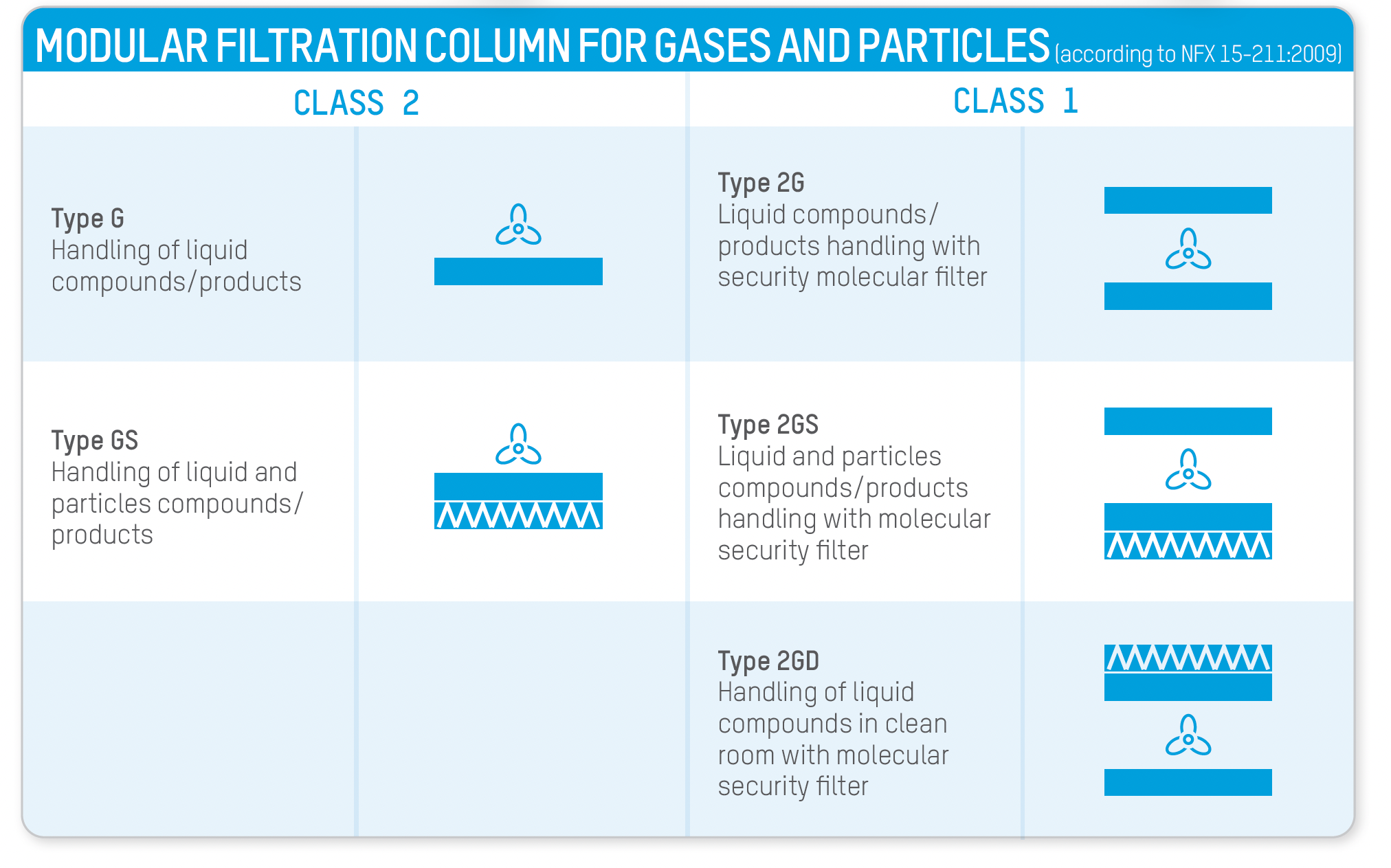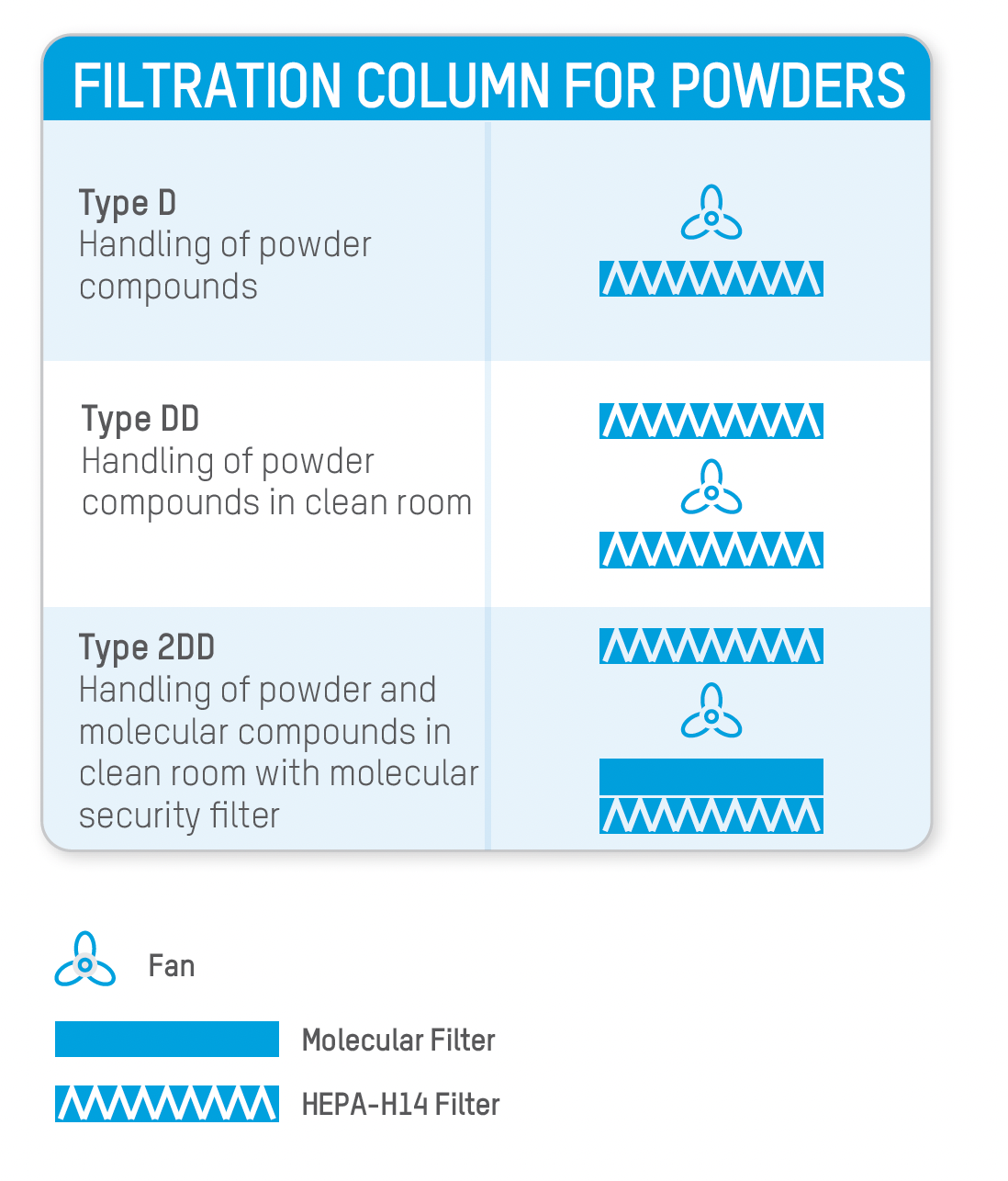Cruma Active Carbon Filters
The patented Cruma filtration system is based on the adsorption phenomenon.
The filters supplied by Cruma are manufactured using active carbon that comes from the shells of coconuts, as this type has the greatest proportion of micropores, which makes it the best choice when adsorbing gas contaminants. There are six types of filters and these are used in different combinations giving us a total of 15 different types (e.g.: AD, BED, FD, etc.):



| Filter Types | Description |
|---|---|
| Type A | For organic vapors such as ketones, ethers, alcohols, xylenes… Eventually it can be used for inorganic acids, but only if used in small quantities because this activated carbon is not impregnated and the excess of acid vapors could saturate it quickly. |
| Type BE | For inorganic acid vapors as H2SO4, HCl, HNO3, and volatile sulfur compounds such as H2S, SO3, … It can be used with organic vapors because the activated carbon incorporates impregnation of metal compounds and neutralizing salts. It is also suitable to filter organic and inorganic compounds when they are in similar proportions. |
| Type F | For formaldehyde vapors and derivatives; also good for other organic compounds. Carbon impregnated with Cu leads, so that it should never be used with inorganic acid vapors. |
| Type K | For NH3 vapors and amines; also good for other organic compounds. Carbon with metal salt complexes impregnation. |
| Type ABEK | Mixed type to be used when the ratios between organic, inorganic and NH3/amines are similar. |
| Type D | HEPA H-14 filter (High Efficiency Particulate Air, according to EN-1822: 1998) for filtering dust and smoke particles. |

